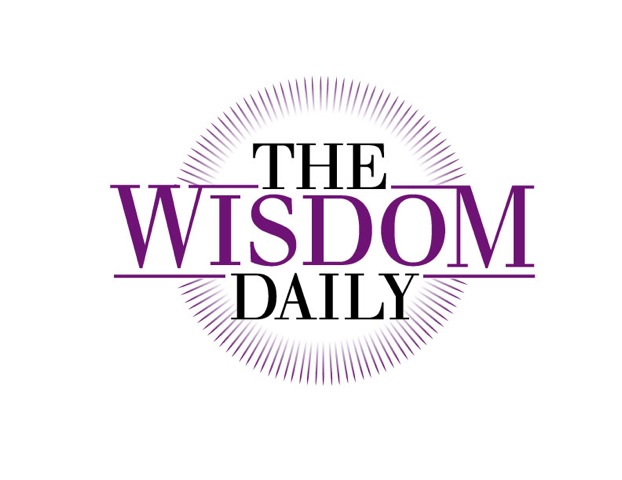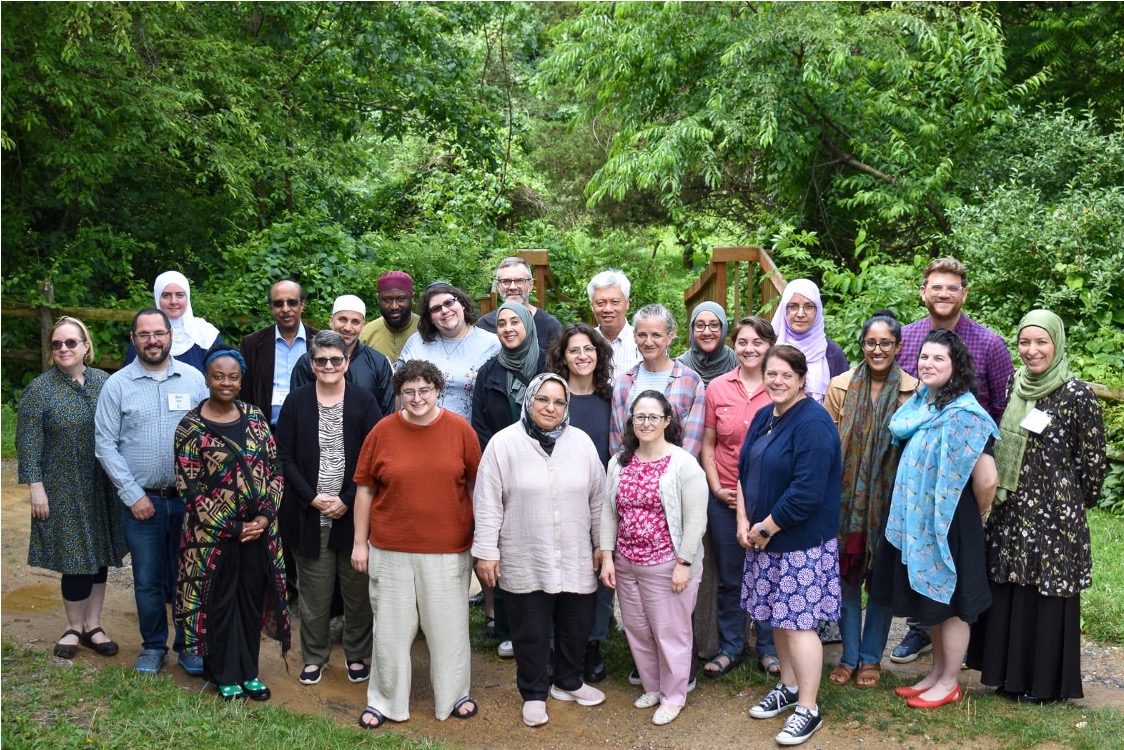Not an avid cyclist, I steel myself once, maybe twice a year for a bike ride on vacation with my family. I recently asked my son if he could 3D print me a reusable sign that says “new driver.” As much as I enjoy learning, biking is an area in which I expect to remain novice, all things considered.
During this summer vacation’s bike ride, as my nose itched for the thousandth time (Why do noses always itch on a bike?) I had the instinct to tighten my stomach muscles to center the bike as I boldly (also read: tentatively) removed one of my clenched hands from the handlebars. Magic. This subtle instinct, this unseen force, allowed me to achieve something new: one-handed biking. I shared this insight with my veteran city-cyclist teen son. He was disbelieving until he gave it a try and then, sincerely grateful, issued a thumbs up as he sped away to the sandy paths ahead.
This instinct carried me last week, when I joined the Institute for Islamic, Christian, and Jewish Studies for their Emerging Religious Leaders Intensive cohort — five days at the Pearlstone Retreat Center with Muslim, Christian, and Jewish colleagues. I have been engaged in interfaith collaborative advocacy and community-building work for over a decade; I wondered what being an “emerging” leader in this space might feel like, particularly “re-emerging” when so many interfaith relationships have deteriorated or imploded since October 7th, 2023.
We were led by experienced academics, educators, artists, and pastoral leaders from the three Abrahamic faiths. The first day, travel and introductions left most of us so weary that we took a nap during our first break. We ate three meals a day together at large tables, having our Kosher, Halal, Gluten-free, and dairy-free needs tended to. On our remaining hours-long midday breaks, we broke off in interfaith groups of twos and sometimes fours or sevens. My fellow travelers were always aware that I was on an epic mission to discover a natural mikvah (running water, with enough to fully immerse one’s body in for Jewish transformative ritual purposes). On our first outing, we were also seeking legendary blueberry clusters, but absolutely revelled instead in the taste of sunlight plucked off the vine – orange and red small tomatoes and strawberries warm from the ground which left us gasping in wonderment.
We learned about each other and each other’s faith. We looked at some of our texts and beliefs in comparison to one another and in contrast. Sitting in mixed religious circles during our learning sessions, I enjoyed recognizing the root words of much of the Arabic I heard from my colleagues. Sometimes I was not as restrained as I thought, whispering the Hebrew parallel under my breath. Often, Eamaan Rabbat, one of our ICJS leaders and Education Director at Rabata (a non-profit organization whose vision includes “a rising tide of Muslim women teachers, faith leaders, and community stewards”) would stage-whisper back, to have me repeat the congruent Hebrew word more loudly.
During our short breaks, we met with our co-religionists, including the two leaders from ICJS from our faith tradition, to debrief, but more often to prepare our prayer service. In our group, our ICJS staff members were there to listen and take notes for us to retain our decisions for the outline of our Shacharit (morning) and Torah service. Each day, one religious group would lead the rest in prayer, letting those of other faiths know when it would make sense to join in and where it would make sense to refrain. Some groups performed prayers and invited reflections and questions afterwards, while sharing why they made the prayer choices they made.
By the second full day together, we moved to a more windowed space, sat in a wide circle, and began to address Israel-Palestine questions the group had posed via survey. Many of the teachers and fellow participants called these Palestine-Israel questions. In that word choice, I heard both the likelihood that I was a minority in the room, as a complicated Zionist, and that I was in a majority of people who would listen to minority experiences and beliefs. I sat among my new friends and a few old friends from my seminary, as we were encouraged to choose a question from the question list that was challenging for us to answer, leaving the “easy” questions for someone else. Our leadership assured us that an “easy” question for us was likely challenging for someone else.
It was not an easy discussion. And as Jewish participants, we were aware of how often we spoke and tried to name this so we could make space for voices and differences of opinion outside of Jewish participants. The questions and answers went round and round. My new friend, “T” (shortened to protect her privacy), shared how she lost her Jewish colleagues immediately after October 7th, without a word. She had worked and laughed and broke bread with these women for seven years and then they were gone. My guarded heart broke in empathy. I too had heard nothing from some—though certainly not all—of my Christian and Muslim colleagues, some of whom I had worked with for nine years.
At the end of the very fraught and respectful circle, an hour and a half or maybe two, we took a break. “T” came up to me and asked if she could hug me. I accepted. We wept in that hug. I began to understand a concept I had previously dismissed: healing can happen between people who have not perpetuated harm against each other. During our break, I told “T” how healing her hug was, how it had attended to a deep and long-time wound. “T” told me that she generally does not like hugs, and that if she offered one, it was serious. I committed to her, if she wanted, to be her colleague and friend and to work through the times that would be painful together. She accepted.
There were other conversations, both one on one and in groups, that transformed me. They brought me peace in a time of war, which by the end of the week had me listening to the pings and alarms alerting me to so many loved ones in danger in Israel. What I realized most of all, after being a part of different interfaith groups for years, was that the organizers and leaders of this program chose us as participants, and then they chose to trust us. The organizers have led many interfaith groups. They had the wisdom of the book and the wisdom of experience to make large and small choices that went into those five days. All of this led to them choosing to trust us.
Here is where I say plainly: I know and have long talked about the fact that our country and our world is in a trust famine. I understand some, but not all, of the causes and effects in our environment. I also know, just as “T” is not a hugger, I am not a trusting person. I trust children most of all, I have been one and I understand them in their wondrous developmental stages. I have compassion for why I do not trust adults: life-endangering trauma as a child and more than one life-altering emotional trauma in professional and social spheres as an adult. Yet, I have built programs and interfaith groups with this trust deficit, and I have not wondered about the impact until now.
The invisible, integral, balancing stomach-muscle engagement of interfaith work is building a space with trust. Trust looks like knowing, as I know innately with children, that there will be missteps and there will be correction. Trust looks like letting adult, emerging religious leaders know—without words, through action and inaction, through invitation—that they have the tools to address painful topics successfully.
Success at the end of the conference now looks like a WhatsApp filled with photos, contact information, sharing blessings and news. It looks like one on one continued friendship via social media, private WhatsApps, and the seedlings of shared projects—one, a long-held dream of mine to open a tri-faith center and preschool in the woods somewhere in America. We remain balanced, our differences unhidden, our disagreements part of the fabric of whatever comes next. At the core of these relationships is the trust that our conveners had in us. This trust is now multiplied and dispersed to each connection we form.
Where there is trust, there is possibility, and there are many moments of peace.

